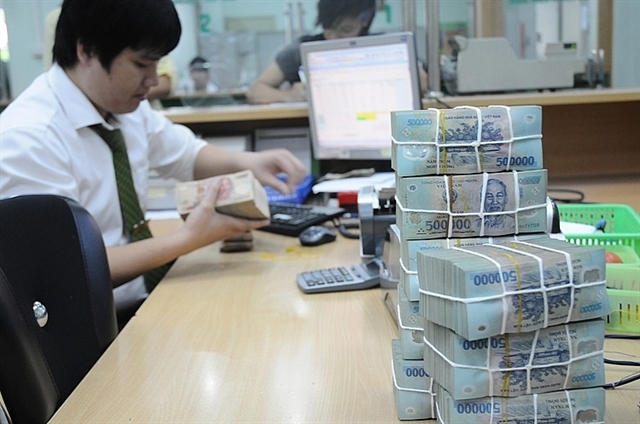 Economy
Economy

The effective management of foreign loans has transformed Việt Nam from a poor and heavily indebted country to a country that international organisations consider to have a controlled external debt level and not in the group of countries with a debt burden.

|
| Võ Hữu Hiển, MoF’s Deputy Director of Debt Management and External Finance Department delivered a speech at the conference. — Photo vgp |
HÀ NỘI — The effective management of foreign loans has transformed Việt Nam from a poor and heavily indebted country to one that international organisations consider to have a controlled external debt and is not in the group of countries with a debt burden.
The information was released at a conference on national debt management held in Hà Nội on Tuesday.
Võ Hữu Hiển, the Ministry of Finance's Deputy Director of Debt Management and External Finance Department, said over the past three decades, Viet Nam had gained many achievements and innovations in debt management, especially foreign debt management.
Foreign capital sources had facilitated the opening of financial-credit relations with international organisations and foreign governments, making a great contribution to Việt Nam’s socio-economic development.
According to the ministry, in the context of limited domestic resources, foreign debts from all economic sectors through flexible use of capital mobilisation has contributed to meet investment needs for public works, encouraged domestic savings and sped up capital turnover. It has also helped unleash potential resources of the economy to achieve socio-economic development goals and stabilise macro economy.
The national external debt ceiling target compared to GDP by the end of 2020 was maintained within safe limits approved by the National Assembly, ensuring national financial security.
The external debt of the public debt sector (government debt and government guaranteed) has been controlled.
Specifically, the proportion of public external debt tends to decrease rapidly in the national external debt structure, from 73.6 per cent in 2010 to 63.4 per cent in 2015 and 43.7 per cent in 2020.

|
| A tax officer counting money. The national external debt ceiling target compared to GDP by the end of 2020 was maintained within safe limits approved by the National Assembly. VNA/VNS Photo |
The growth rate of external debt balance of the public sector has also been strictly controlled, from the average of 13 per cent a year in the period of 2011-15 to about 3 per cent a year in the 2016-20 period, contributing to curbing direct debt obligations and State budget provisions.
In addition, foreign loans of the Government are still mainly ODA and concessional loans (accounting for 98 per cent of the total Government external debt).
Việt Nam has so far signed over US$85 billion of ODA and preferential capital with relatively favourable loan conditions. The average maturity is 13.8 years with weighted average interest rate of 1.35 per cent.
However, Việt Nam has become a low-middle-income country. All economic sectors, including the Government and the private sector, have the ability to access foreign loans according to market conditions.
In this context, management agencies need to continue to research and update international knowledge and experience to develop national external debt management policies and tools to better suit the dynamics of debt work in a new situation.
International organisations recommended that Việt Nam consider and adjust the country's foreign debt management policies and tools to better suit the risk characteristics of each debt component and the country's development conditions.
A representative of the International Monetary Fund said that Việt Nam's current foreign debt management mechanism has not focused on sources of risk. Short-term loans are less managed than long-term ones; no self-insurance requirement as well as a clear regulatory change strategy in response to vulnerability risks.
In addition, there are not some initial conditions for the liberalisation of safe foreign loans, especially short-term loans.
The workshop was organised to collect ideas for the management agencies to continue to study and complete the framework of foreign debt management policy, in accordance with the requirements for the medium and long term. — VNS




